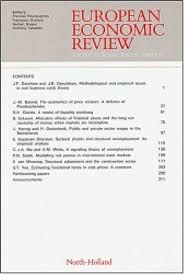
Roesch, M., Gerritse, M., Karreman, B., \van Oort\, F. and Loog, B. (2025). Do workers or firms drive the foreign acquisition wage gap? European Economic Review, 178:.
-
Affiliated authors
-
Publication year2025
-
JournalEuropean Economic Review
Foreign-acquired firms pay higher wages. The wage gap may arise with worker composition (e.g., sorting of high-quality workers) or firm-level premia (e.g., productivity improvements). We propose a dynamic decomposition on The Netherlands{\textquoteright} universal employer–employee data to understand the drivers of the post-acquisition wage gap. The wage gap rises from 1% to 5% after the acquisition, and firm level premia account for roughly three-quarters of the gap. The contribution of the workforce composition is initially absent, but grows to one-fifth of the wage gap, driven solely by new hires. Firm-level premia associate with higher management pay, worker training, and firms{\textquoteright} internationalization strategies. We show how the implied relative importance of worker sorting and firm-level development varies with assumptions on the counterfactual of the acquisition.